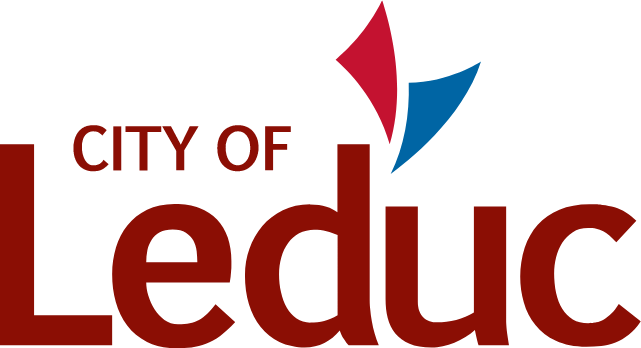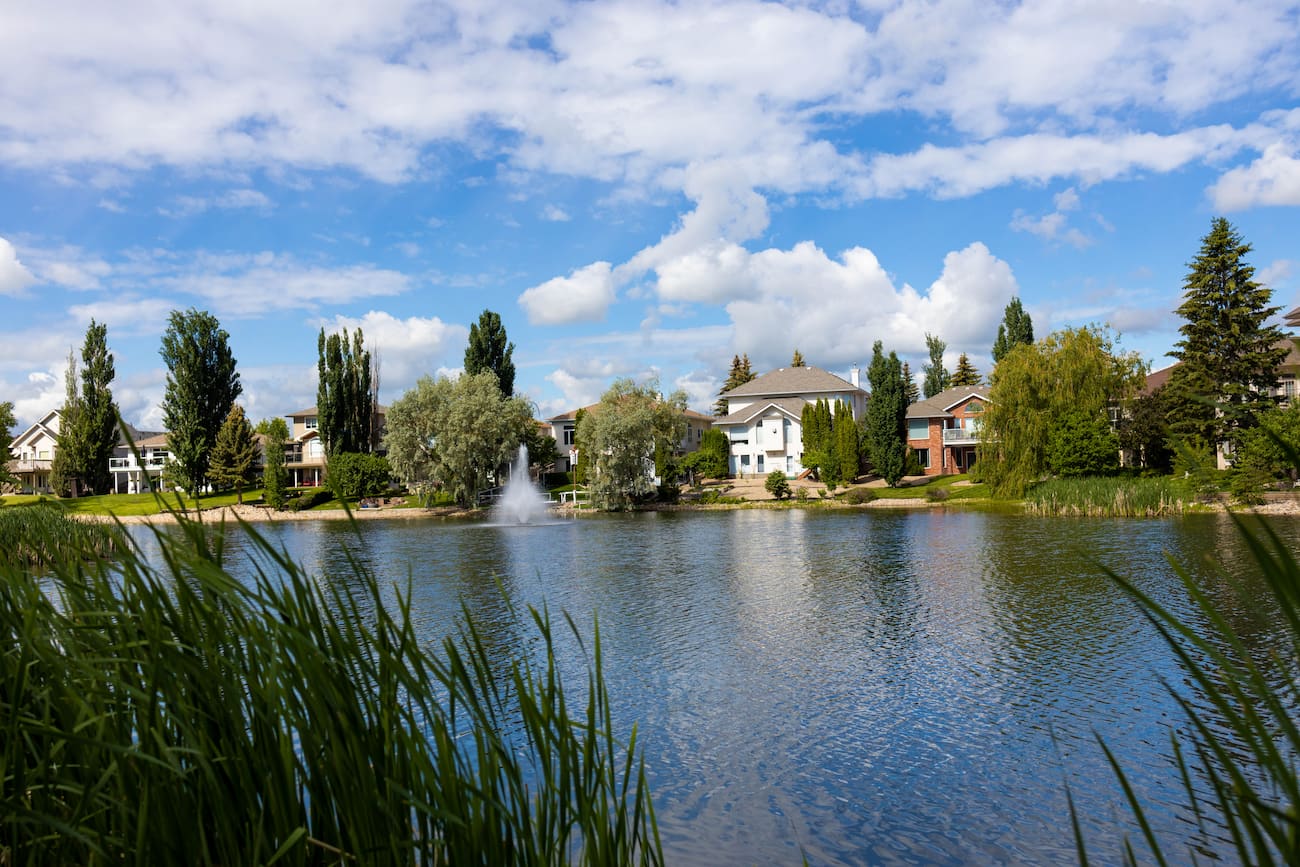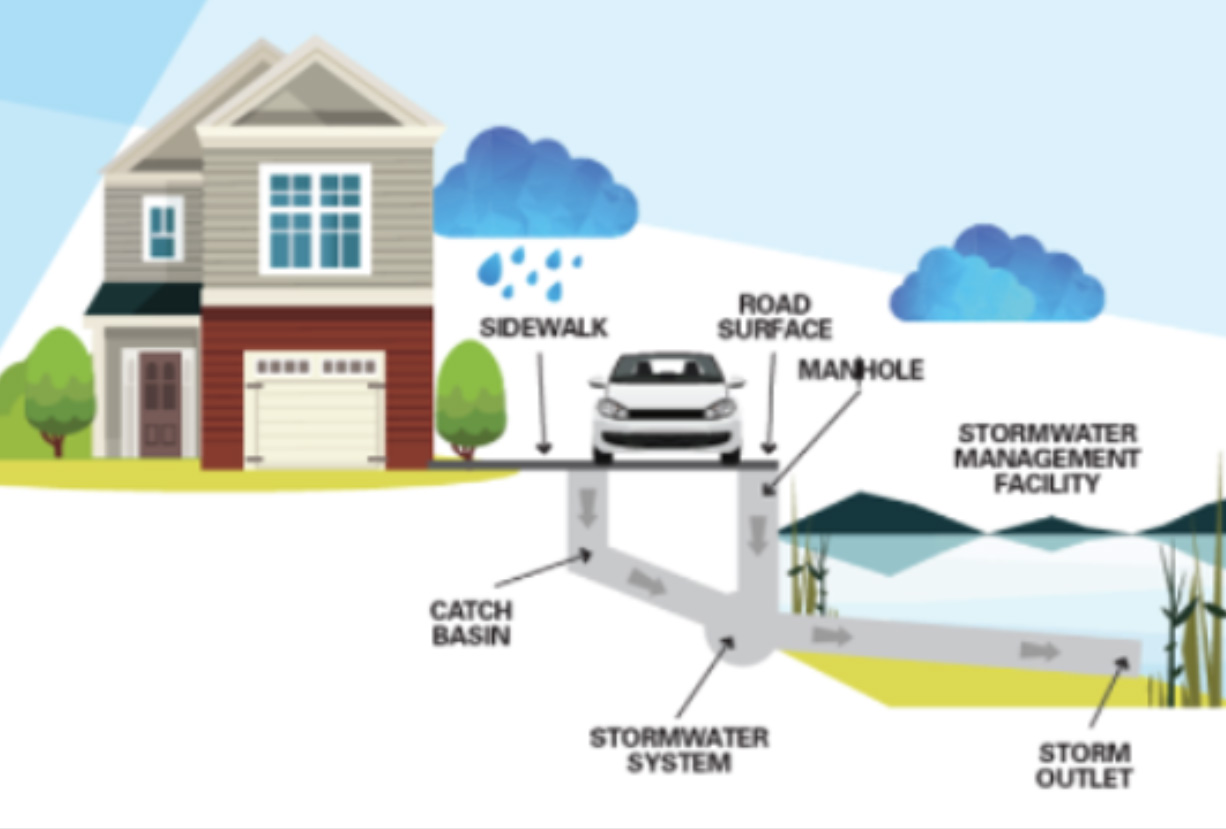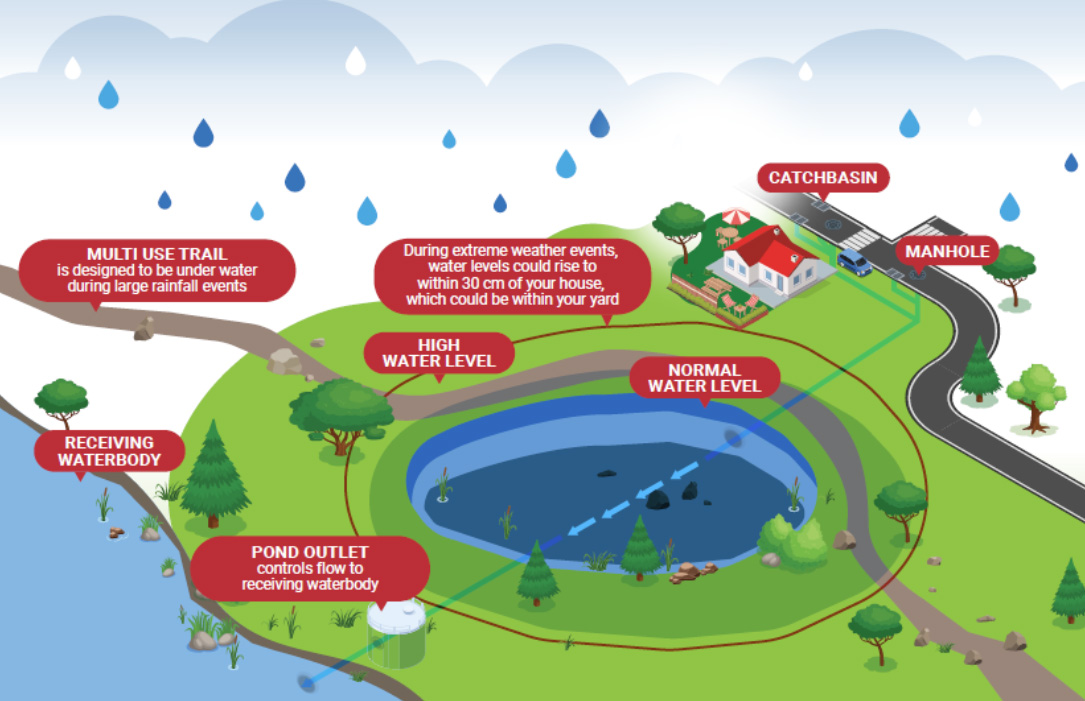Stormwater is water from rain and melted snow that runs off lawns, roofs, pavement and goes into sewers, ditches, culverts, creeks and lakes. The most visible impact of stormwater is flooding during large rainfall events that can cause damage to property, infrastructure and the environment. Stormwater can also cause erosion, sedimentation and pollution.
How we manage stormwater is integral to maintaining sustainable neighbourhoods to ensure stormwater is directed away from your property. The management of stormwater is essential to reduce the risk of flooding, and to conserve and protect water resources.
The City’s Stormwater Master Plan assesses the performance of our stormwater management infrastructure against the most severe storms we may face. It calls for the addition of stormwater infrastructure in older areas of Leduc to be done in conjunction with regular road maintenance projects. This allows us to:
- Reduce costs by constructing utilities and roads together.
- Extending the life of roadways by reducing the frequency and severity of ponding on them.
- Increase stormwater service levels in older neighbourhoods during more intense storms.



